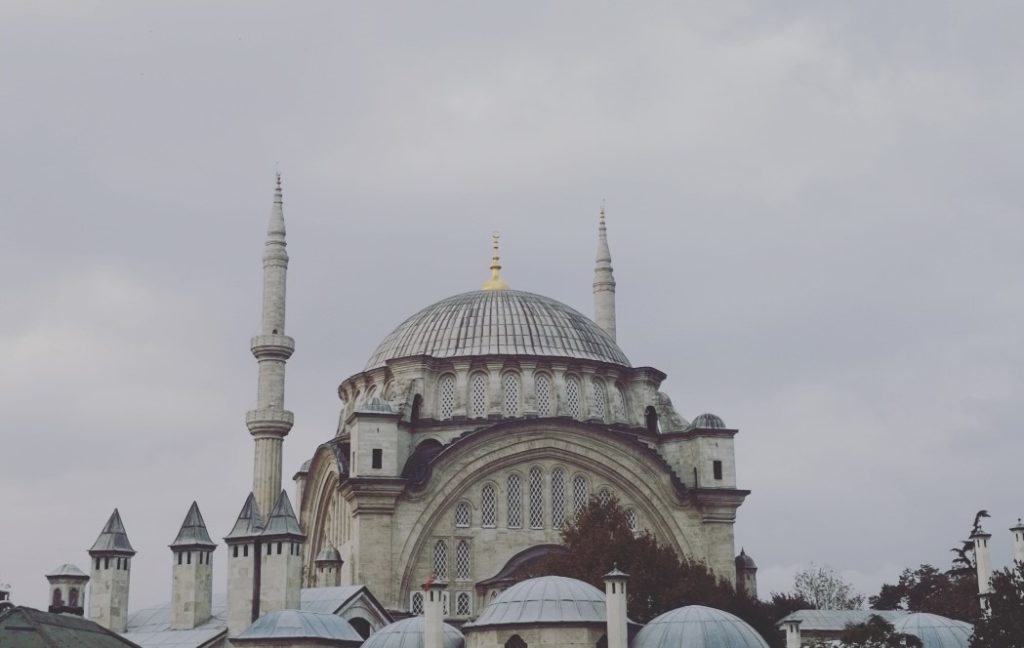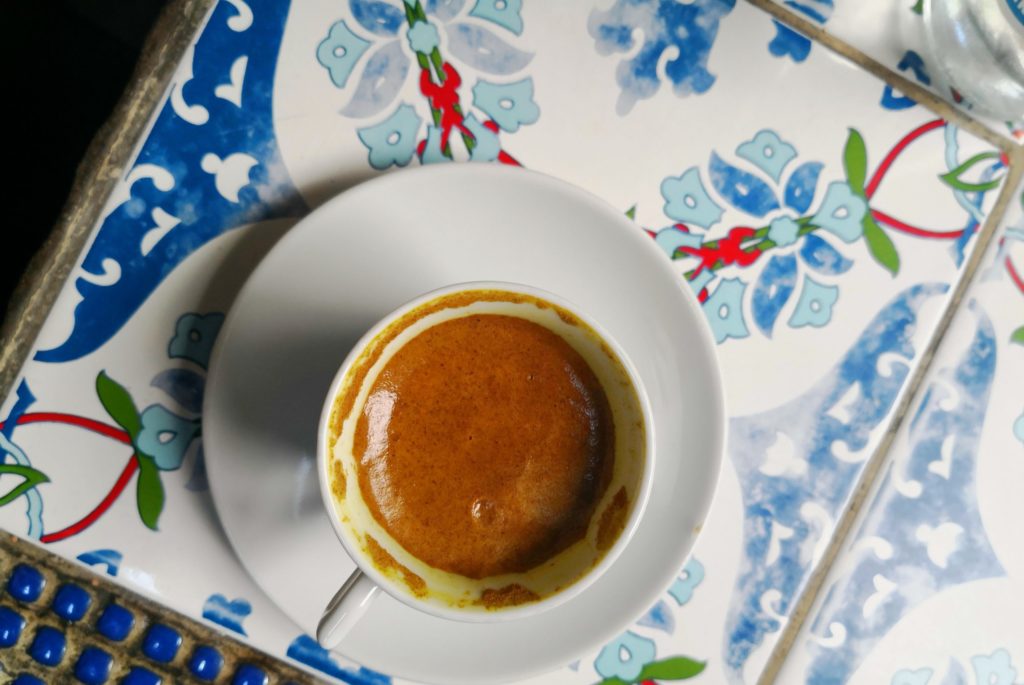1. Hagia Sophia Mosque
Located in the main square, Hagia Sophia with its peachy exterior is one of the most iconic buildings in the city. The cool thing about this mosque is that it holds a collage of cultural history within its walls. Originally built by a Byzantine emperor and then reno’d after the Ottoman invasion, there’s a mesh of Christian and Islamic iconography left behind. The images of Christian figures partially painted over with more recent islamic illustrations give the mosque a uniquely archeological-museum feel. And it is. Or was technically a museum, up until 2020, at which point it was re-converted back into a functioning mosque again. You can still visit, just outside prayer times and you’ll need to observe the usual mosque etiquette by removing your footwear and dressing modestly. That means covering up your legs and shoulders, and if you’re a woman covering your hair with a scarf too (they usually have these to borrow just outside the mosque entrance).

2. Blue Mosque.
This aptly named mosque (also known as the Sultan Ahmet mosque) has beautiful handmade blue ceramic tiles inside. At night, there are lights that illuminate the exterior giving it an eerie glow. This mosque was built much later than Hagia Sophia and unlike Hagia doesn’t have the same mix of cultural history to draw on and that’s very much reflected in its simple style. It’s far more traditional and consistent looking than Hagia. It was built by Sultan Ahmet I during the seventeenth century. He forked out quite a bit of tax payer money for its construction, which at the time didn’t go down well. Like Hagia now, the Blue mosque is a fully functioning mosque and well worth a stroll across the square to visit.
3. Try Turkish coffee
Turkish coffee isn’t like Starbucks, it’s an acquired taste for many and the process of making it feels unusually antiquated. The coffee utensils look like something you could summon a genie from. The traditional process involves submerging a golden coffee jug into what looks like a tiny sandpit that sits atop a stove or open fire. The sand helps evenly heat the coffee and water inside. When ready, the dark gritty bitter liquid is poured into tiny intricately decorated cups, sometimes with sugar already added and sometimes without. It’s ‘enjoyed'(sipped) with a piece of pistachio baklava or Turkish delight as a ‘side’ (chaser). For anyone who’s a coffee drinker or is interested in coffee making, trying Turkish coffee or even doing a coffee tour is a must do.

4. Go window shopping in the grand bazaar
You don’t see many magpies in the Turkish bazaar. If there were however, I imagine that as birds obsessed with the shiny things of this world, they would likely go into catatonic sensory overload. The sheer amount of buffed metal pots, glistening silver trays, glittering lamps and sparkling jewelry is over the top opulence. It feels like you’re at a pirate convention and everyone brought their treasure booty to sell. (And try to sell they do, in fact the heckling sales pitches can get somewhat exhausting strolling through the bazaar). It’s not just the shiny treasure that’s eye catching, it’s also the bright woven fabrics, and excessively colourful herbs and spices too. Even if you don’t buy anything it’ll be a feast for your eyes.
5. Speaking of feasts
Middle Eastern cultures aren’t known for skimping on food or hospitality. It’s pleasantly unsurprising then that the food in Istanbul is just like the service. Generous. Expect to receive something you probably don’t remember ordering. There are plenty of sit down restaurants in Sultanahmet to get your fill of Kofte, dolma, pide, hummus, borek and kebabs any which way you like. There are also heaps of street food carts dotted around Sultanahmet’s main square. Some of which look like little circus gypsy vans with comical candy red stripes on the roof and wagon wheels. They sell all sorts of Turkish snacks for those on the go, including oddly a lot of corn on the cob.